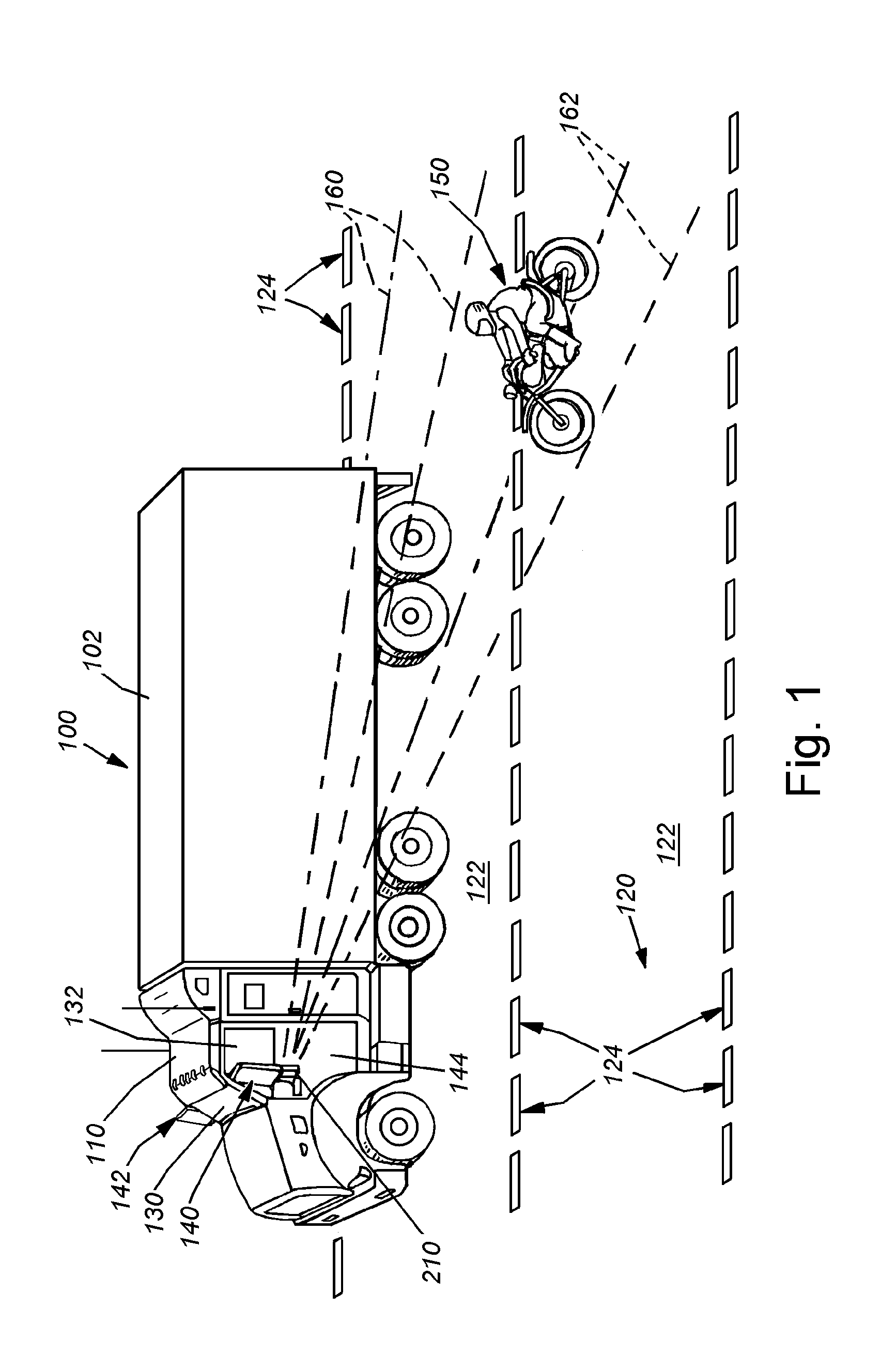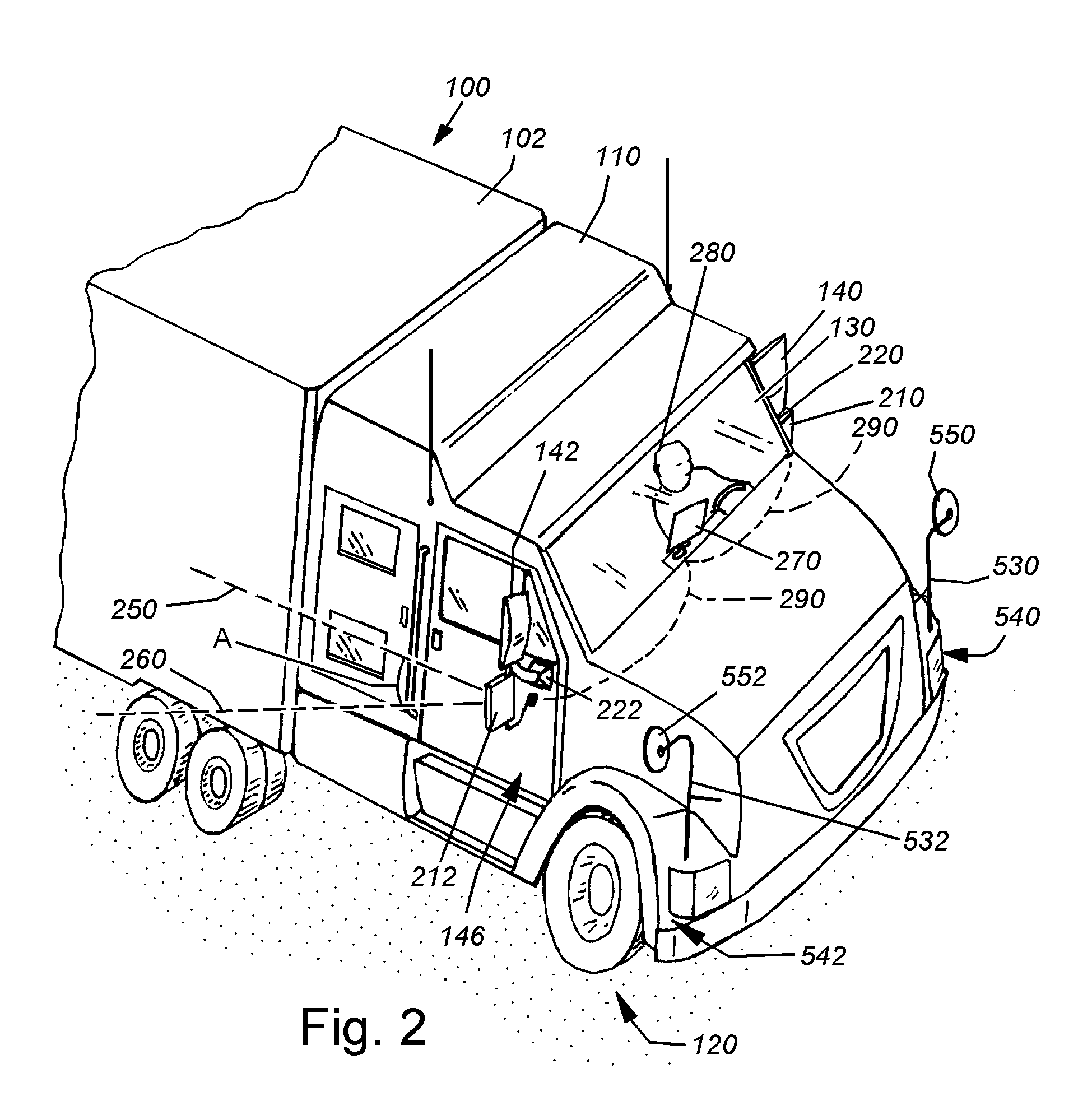System and method for side vision detection of obstacles for vehicles
- Summary
- Abstract
- Description
- Claims
- Application Information
AI Technical Summary
Benefits of technology
Problems solved by technology
Method used
Image
Examples
Embodiment Construction
[0028]FIG. 1 shows an obstacle detection and collision-avoidance system mounted on an exemplary tractor trailer 100. The tractor trailer (also part of a class of large cargo vehicles termed generally herein as a “truck”) 100 includes a box trailer 102 and a cab 110. The cab 110 houses the driver and provides the motive power for the rig. The driver is mounted relatively high in the cab 110 above the road surface 120, which consists of a plurality of highway lanes 122, separated by dividing lines 124. The cab windshield 130 affords the driver good visibility of the road ahead at long, medium and somewhat close distances. Likewise, the side windows 132 afford the driver a good view of obstacles and vehicles that are substantially aside the cab. Because rear view of the cab is occluded by the tall trailer 102, the driver relies upon large mirror assemblies 140, 142, which are horizontally spaced from the adjacent cab door (driver-side door 144 being shown in FIG. 1 and the passenger do...
PUM
 Login to View More
Login to View More Abstract
Description
Claims
Application Information
 Login to View More
Login to View More - R&D
- Intellectual Property
- Life Sciences
- Materials
- Tech Scout
- Unparalleled Data Quality
- Higher Quality Content
- 60% Fewer Hallucinations
Browse by: Latest US Patents, China's latest patents, Technical Efficacy Thesaurus, Application Domain, Technology Topic, Popular Technical Reports.
© 2025 PatSnap. All rights reserved.Legal|Privacy policy|Modern Slavery Act Transparency Statement|Sitemap|About US| Contact US: help@patsnap.com



